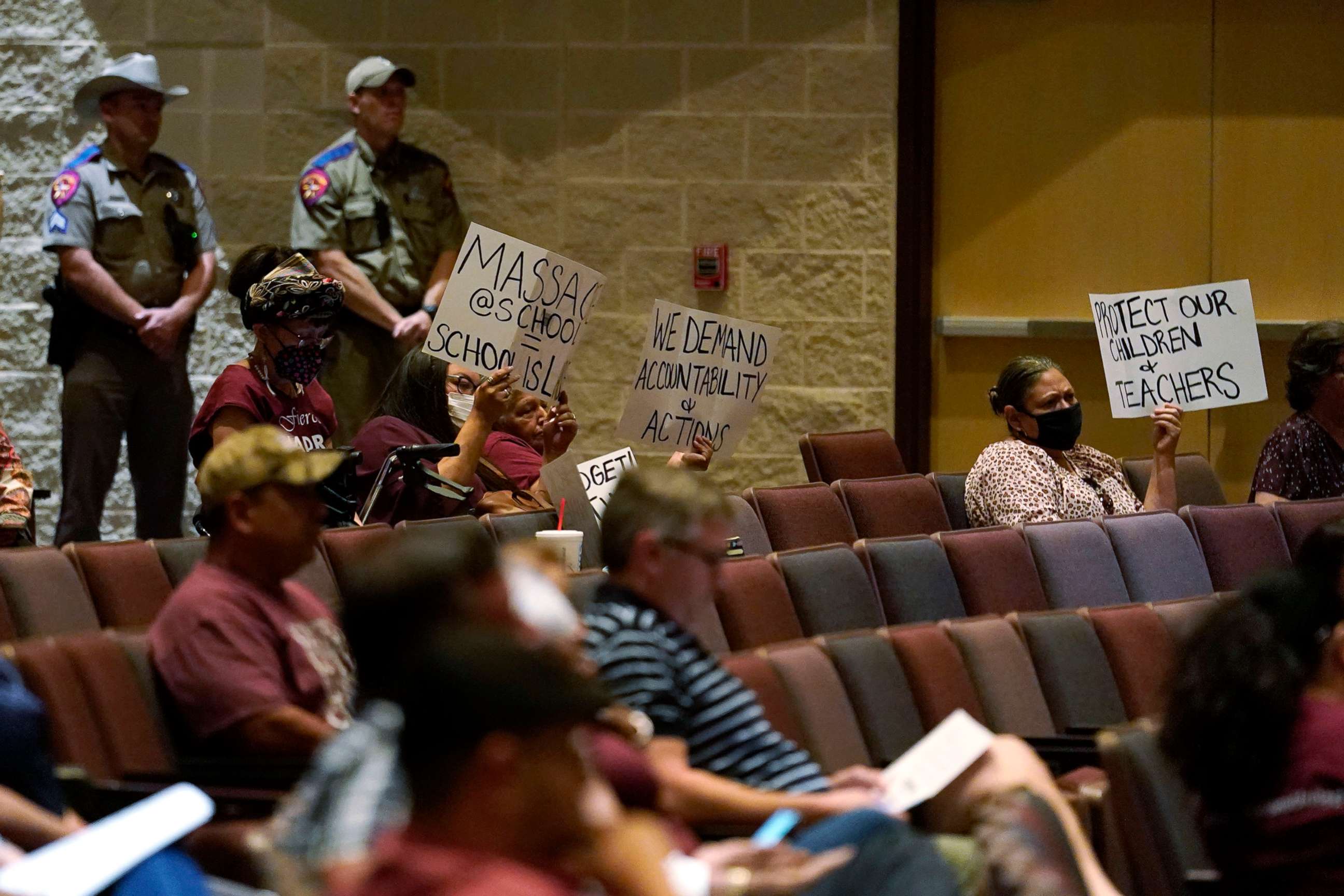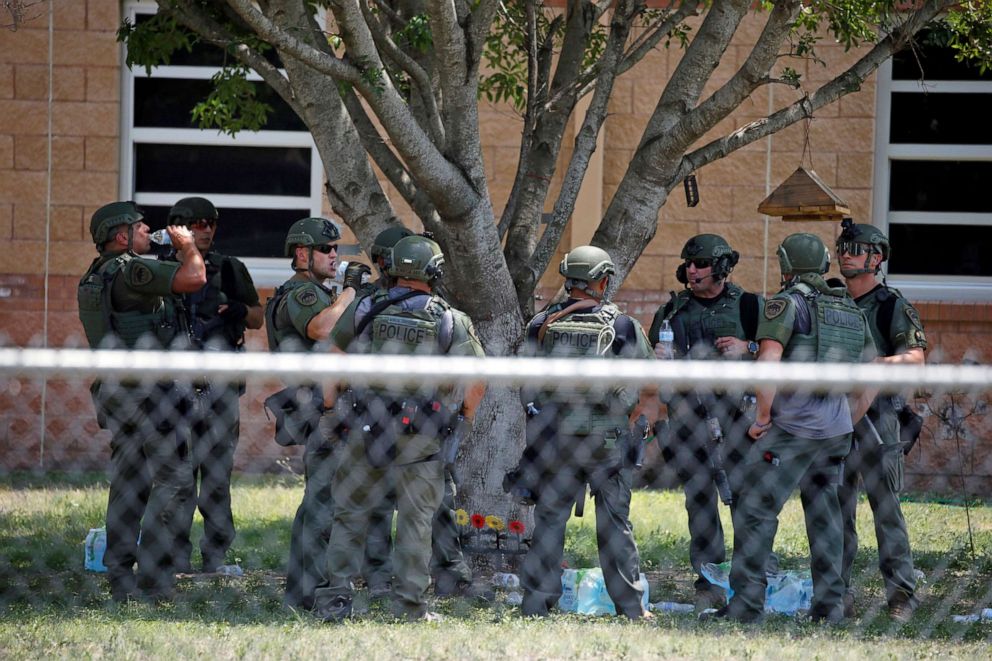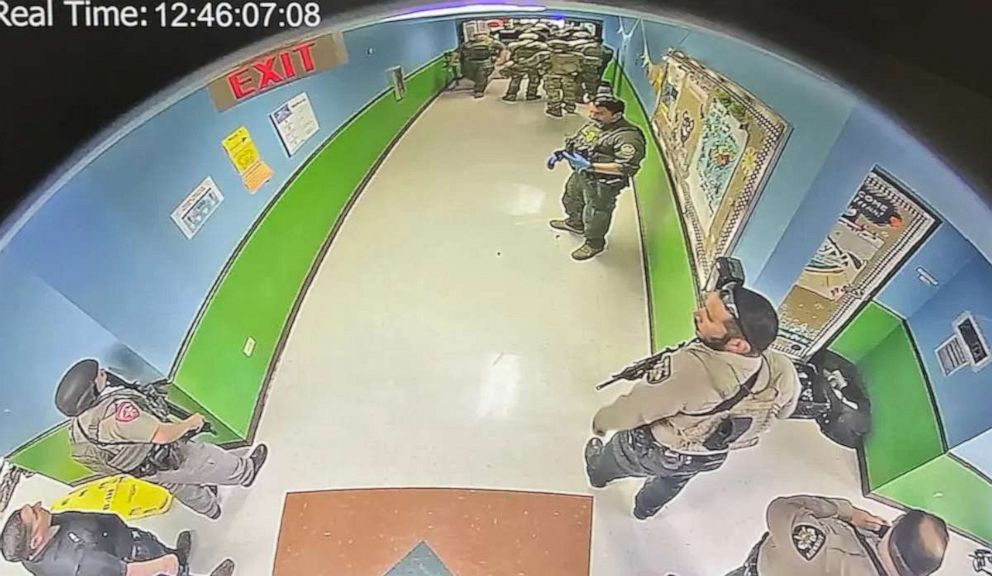Committee debunks report officer had Uvalde gunman in crosshairs before he entered school
The committee's investigation found that the cop was aiming at a school coach.
The special committee investigating the mass shooting at Robb Elementary School in Uvalde, Texas, dismissed a report that a police officer had an opportunity to shoot the gunman before he entered the school.
The joint committee of the Texas Legislature, which released the findings of its investigation on Sunday of the May 24 massacre, found that a Uvalde police officer did not have the gunman in the crosshairs of his rifle scope before he entered the school.
Instead, the committee found that the officer was aiming at a school coach helping students get out of harm's way and that the cop mistaking the coach for the suspect had requested permission to pull the trigger from his sergeant, who hesitated when he saw children in the line of fire, according to the committee.
The initial account that the officer had an opportunity to shoot the gunman outside the school -- widely covered by news media outlets, including ABC News -- was part of an assessment of the police response made public on July 6 by the Advanced Law Enforcement Rapid Response Training Center at Texas State University in San Marcos.

"A reasonable officer would conclude in this case, based upon the totality of the circumstances, that use of deadly force was warranted," the training center report said. It noted that had the situation "worked out differently," the officer could have "stopped the tragedy that followed."
Uvalde:365 is a continuing ABC News series reported from Uvalde and focused on the Texas community and how it forges on in the shadow of tragedy.
But during its 44-day investigation of the rampage that left 19 students and two teachers dead, the joint committee of the Texas Legislature interviewed both the officer and his sergeant, who the committee's report identified as Daniel Coronado of the Uvalde Police Department, and deemed the training center account inaccurate.
The committee found that the unnamed officer and Coronado both heard gunfire when they arrived at the school around the same time.
"One of the officers testified to the Committee that based on the sound of echoes, he believed the shooter had fired in their direction. That officer saw children dressed in bright colors in the playground, all running away," according to the committee's report. "Then, at a distance exceeding 100 yards, he saw a person dressed in black, also running away. Thinking that the person dressed in black was the attacker, he raised his rifle and asked Sgt. Coronado for permission to shoot."
Coronado testified to the committee that he heard the officer's request, but "hesitated" on answering him, according to the committee's report.
"He (Coronado) knew there were children present. He considered the risk of shooting a child, and he quickly recalled his training that officers are responsible for every round that goes downrange," according to the committee's report.
By the time the officer looked back, the man whom he asked permission to shoot was no longer in his sights, according to the committee's report.

But the officer who made the request to fire told the committee Coronado didn't have an opportunity to respond before they heard on their radios the attacker was running toward the school.
"The officers testified to the Committee that it turned out that the person they had seen dressed in black was not the attacker, but instead it was Robb Elementary Coach Abraham Gonzales," the committee wrote in its report.
Gonzales, who was interviewed by the investigators from the Texas Department of Public Safety, said he was walking to the campus parking lot to leave the school when he heard a gunshot and then heard another school coach on his two-way radio reporting gunshots being fired, according to the committee.
"He told the children around him to run away," according to the committee's report.
Two teachers who testified before the committee said Gonzales yelled at their students to "lock down" as the attacker approached the school building.
The committee found that the gunman entered the school unimpeded through one of three unlocked doors on the west side of the campus.
"Of the approximately 142 rounds the attacker fired inside the building, it is almost certain that he rapidly fired over 100 of those rounds before any officers entered," the committee stated in its report.
Investigators said a group of police officers entered the school building three minute after the gunman and retreated down a hallway when they came under fire.
Two days after the training center report was released, Uvalde Mayor Don McLaughlin issued a statement, saying the report was wrong.

"No Uvalde police officers had any opportunity to take a shot at the gunman," McLaughlin said. "A Uvalde Police Department officer saw someone outside but was unsure of who he saw and observed children in the area as well. Ultimately, it was a coach with children on the playground, not the shooter."
As the investigation of one of the deadliest school shootings in U.S. history has unfolded, law enforcement and government officials have come under scrutiny for the twisting narrative about crucial elements of the police response.
In his press conference the day after the rampage, Texas Gov. Greg Abbott and officials from the Texas Department of Public Safety framed the response from police as being swift, saying schools police officers engaged the gunman before he got into the school. But as more evidence has been uncovered, the timeline has been stretched from a rapid response to one that took 77 minutes from the time the shooter entered the school to when he was killed by officers.
Abbott later said he was "livid" after initially being "misled" about the police response.
Days after Texas Public Safety Director Steve McCraw criticized the way law enforcement handled the shooting, Uvalde officials sought a more positive portrayal of the police response, according to a memo obtained by ABC News.
The one-page memo, first reported by The New York Times, outlined a version of events that defended law enforcement response, contrary to the earlier accounts of the massacre. It was presented by the Uvalde city attorney to McCraw at a meeting on June 2, but was immediately rejected.
The joint committee of the Texas Legislature's report was also critical of the release of "false and misleading information" and called on law enforcement to be "very careful to state what facts are verifiable, and which ones are not."




